10 Reasons Why You Should NOT Travel to South America
10 Reasons Why You Should NOT Travel to South America
10 Reasons Why You Should NOT Travel to South America
1. The coffee isn’t imported
In most of the countries you’ll go to in south America; Colombia, Brazil, Ecuador etc – you’ll find that you can’t even get a good cup of imported coffee. You’re limited to only having what grows locally. It’s strange adapting to something so fresh – my taste buds never did know what to do.
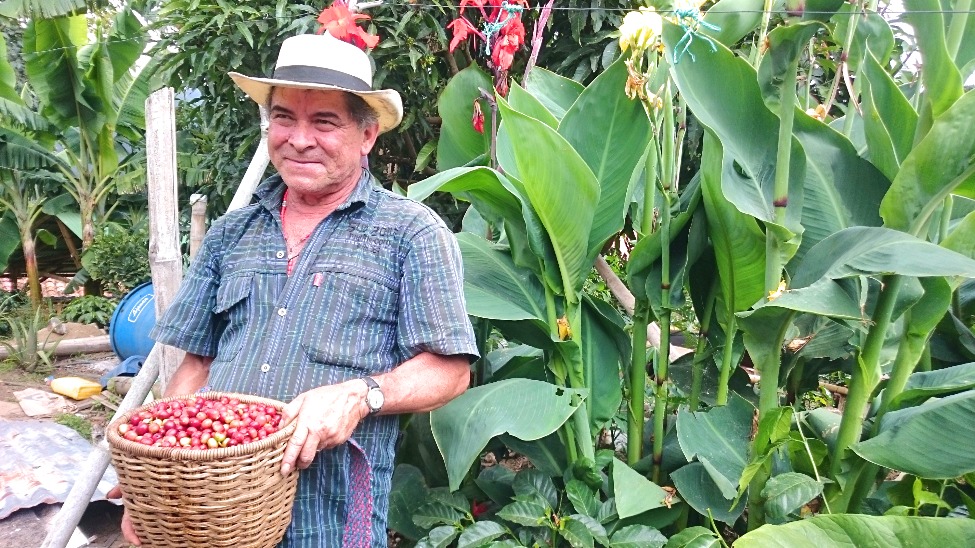
(This amazing coffee farmer in Colombia showed us around his plantation before making us an awesome cup of coffee – you can see his tours HERE)
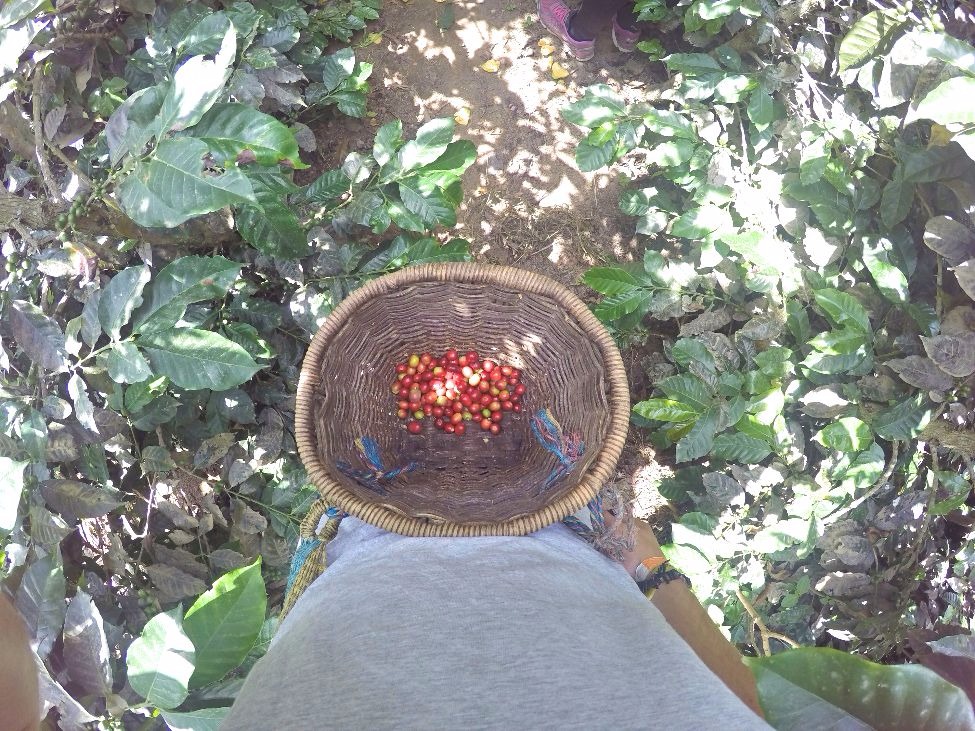
(Collecting coffee beans)
2. Too many potatoes
Peru alone has over 4,000 types of potatoes!! That’s ridiculous. What could one country do with so many potatoes. I think that as a means of getting rid of some of them, the country has people who make chips on the side of the streets. As you walk up to them, they’re cutting the potato, frying it, and then selling it to you cheaper than the price of a single potato at home.
3. Too many ancient ruins
It’s true. The place has so many ancient ruins AND they’re everywhere!! You can literally see ancient ruins in whichever country you go to. Most people think it starts and stops with Machu Picchu, but nope, there’s more! So be prepared to be overwhelmed.
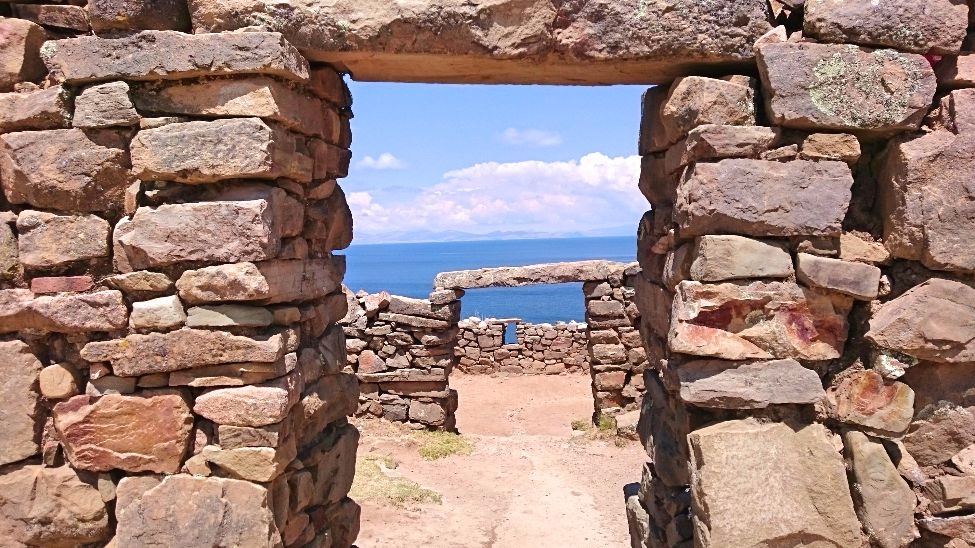
(Located on Bolivia’s Isla del Sol – Sun Island is a whole bunch of ancient ruins. I wrote a blog about it HERE)
4. Too many mountains and waterfalls
It’s starting to tire me out thinking about it, but yes, the country is prodigiously packed with waterfalls and mountains that you’ll get sick of seeing them. Foz do Iguaçu, which sits right on the border of Argentina and Brazil is barely even enjoyable due to the amount of noise created from the force of the millions of litres of water (per second) falling from a height of 82 meters. And then we have the Andes. This mountain range is EVERYWHERE. It stretches from down south in Argentina and right up to Colombia (In the north). So if you think you’ve seen it enough times, think again, because it’ll be there, waiting for you in some other country.
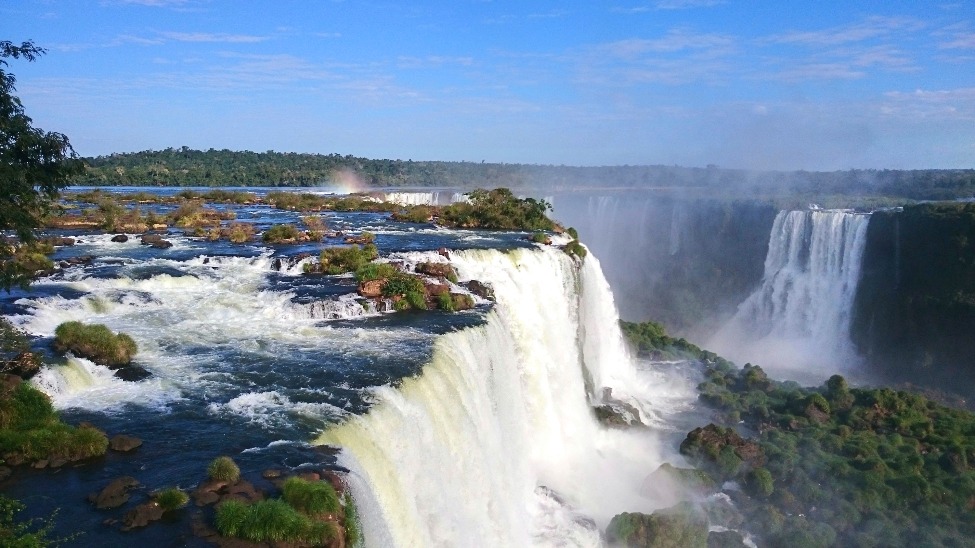
(An incredible view of Foz do Iguaçu from the Argentinian side)
5. It’s too bloody big
The continent is massive!! And seriously, how are you going to be able to travel it and see everything in a one or two week when the continent in almost twice the size of Europe! You’re going to need a LONG time if you want to see it all
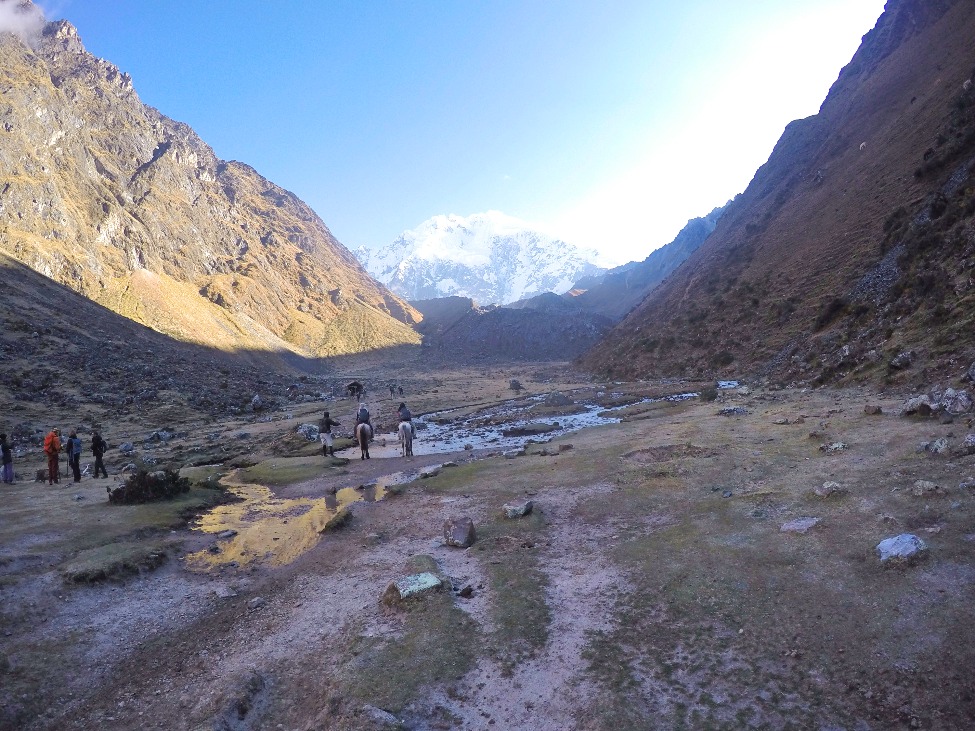
(Incredible view of the Andes Mountain Range in Peru)
6. The people make you feel bad
I have honestly never met so many nice people in my life. The South American locals have got to be some of the most humble, sweetest and endearing people I’ve ever met. How can they be so kind, altruistic and positive when they barely even drink imported coffee?? It’s honestly the worst – if you do go there, be prepared to leave feeling jealous of their dazzling charisma and wonderful charm.
7. Too many beautiful beaches to choose from
What’s wrong with this continent .. why can’t it just stick to having a couple of nice beaches? It doesn’t make sense to have SO many beautiful beaches and then to scatter them ALL over the continent. I mean seriously, they’ve decided to fill the east coast with the Atlantic Ocean. The sunsets are perfect and the glare from the water hurts your eyes … and don’t even get me started on the West Coast. The Pacific Ocean runs right up until Colombia, and then to add insult to injury, Colombia throws a Caribbean Coast into the mix!! What’s one to do?? The waters on the North part of Colombia are so clear that anyone with a phobia of fish wouldn’t even enter as you can see them everywhere!!
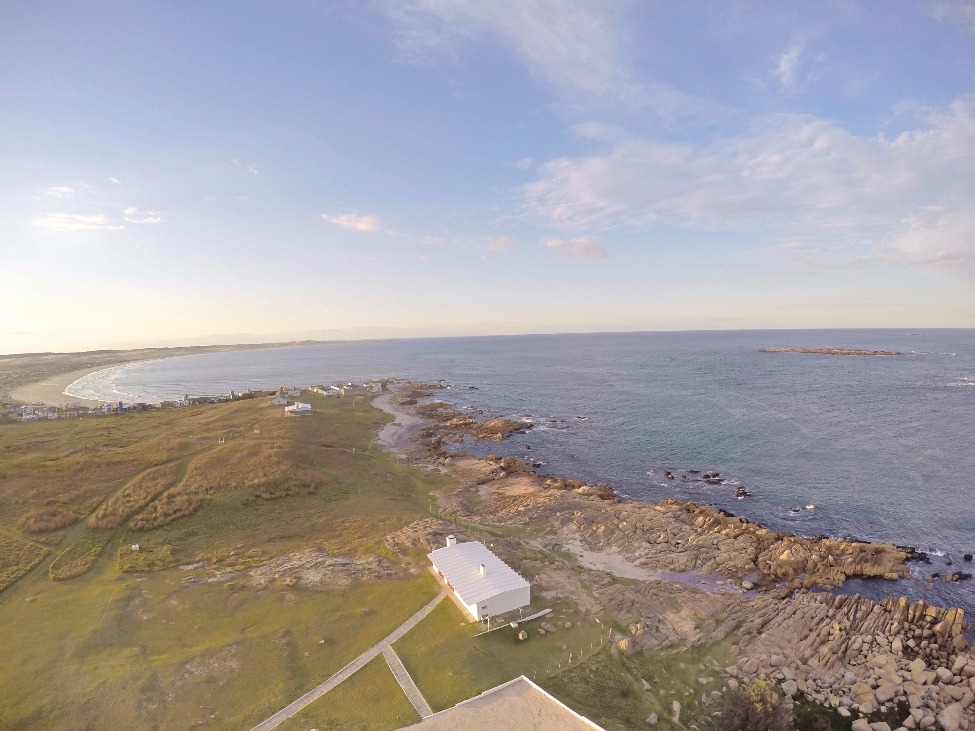
(Cabo Polonio – Located in Uruguay and home to a tiny beach village – see it HERE)
8. Weird Animals
The animals that I saw in South America were amongst some of the weirdest animals that I’ve ever seen. Without even mentioning the amount of caiman, snakes, tapirs (look HERE if you don’t know what it is), monkeys, birds and dolphins (yes, dolphins) that infest the amazon, the Galapagos Islands are just swarmed with strange creatures. Without fail you’ll see these crazy iguanas that resemble something from an Alien movie. And don’t even get me started on the tortoises and turtles. Honestly, why do they even have to be that big?? These things are crazy.
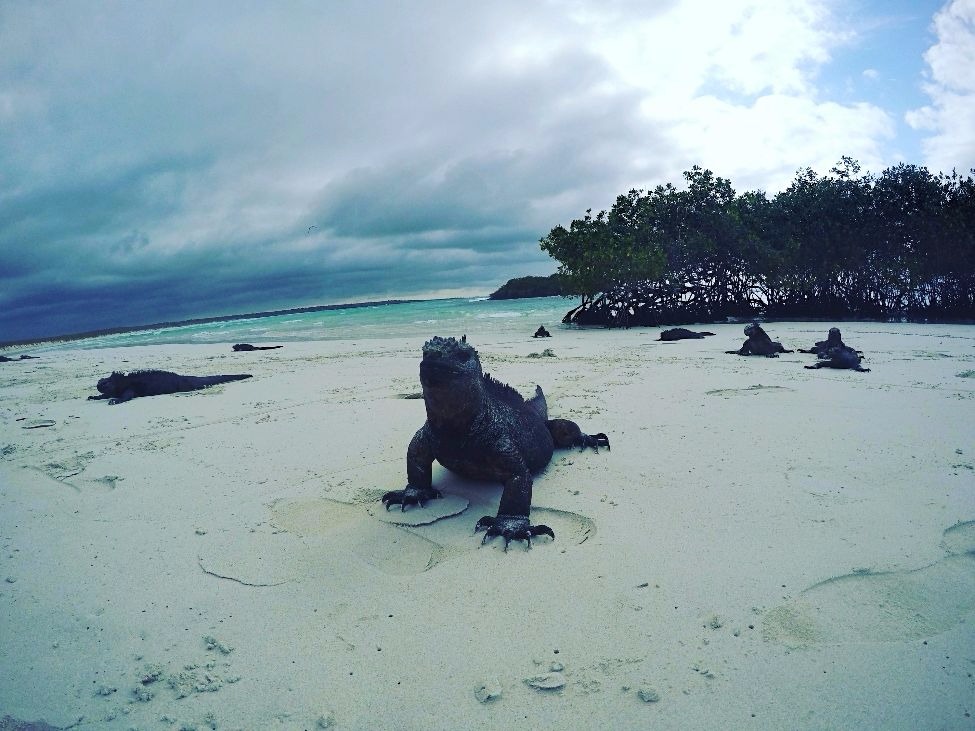
(Some aliens/iguanas on the Galapagos Islands)
9. You won’t want to return home
It’s true, once you’re there, you are trapped. You will not want to leave. You’ll discover what an amazing continent it is and you’ll never want to leave!! It’s ok though – because like all great things, everything has to come to an end … for now. If you’re anything like me, and you’ve experienced these 10 reasons why you should NOT travel to South America, then more than likely the travel bug will have set in, and you’ll find any means possible to return to this truly incredible continent. By the way … If you liked this blog, have a read of one I wrote on catching the travel bug, and if it’s curable or not. You can read it HERE!
10. ALL THE ABOVE
And so that about wraps up my 10 reasons why you should NOT travel to South America. I hope I’ve managed to demonstrate the absolute love that I have for this continent. Also this list sits right at the tip of the ice-burg with the reasons why you should NOT travel to South America. There are plenty more out there which I will be writing about
21 Best Places to Visit in South America
South America is a continent of superlatives: the highest, the driest, the largest, the deepest, the rarest … Well, you get the picture. Superlatives galore can be found from Caracas to Tierra del Fuego, helping ensure every traveler finds something to interest them.
Environmentalists will enjoy the well-conserved Pantanal in Brazil, while shoppers can choose between upscale boutiques in big cities like Rio de Janeiro or the colorful markets of Andean villages. You can explore lost cities of ancient civilizations, feast your eyes on stunning scenery almost everywhere you go or you can feast your taste buds on the cuisine.
It’s your choice, and South America gives you lots of them. An overview of the best places to visit in South America:
21. Cartagena (Colombia) [SEE MAP]
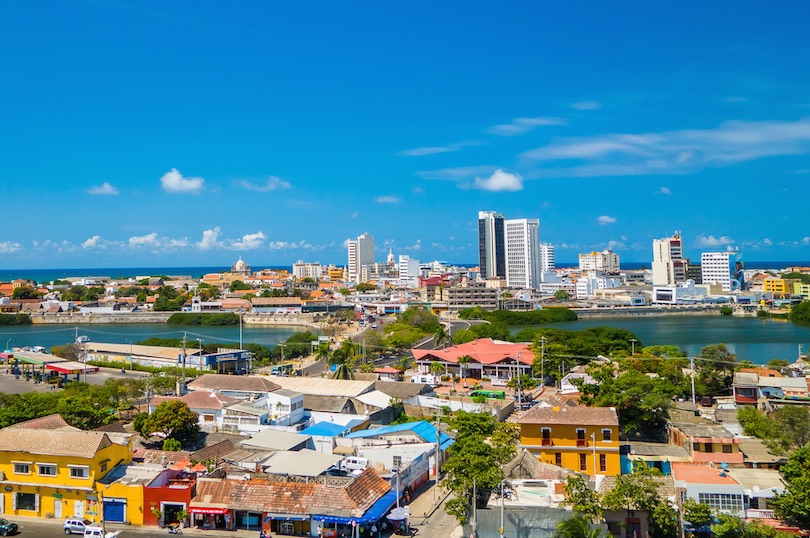
Cartagena is a major city on Colombia’s Caribbean coast. It was founded by the Spanish in 1533, who named it after Cartagena, Spain. During Spain’s domination in South America, the city was the center of politics and the economy.
Cartagena is a quite modern city today, but you’ll find walled historic center and the fortress, deemed the largest fortifications in South America, that defended it. Cartagena has a rich cultural scene, with festivals throughout the year; museums and art galleries.
20. Salvador (Brazil) [SEE MAP]

Salvador da Bahia, also known as just Salvador, has several things going for it. The Portuguese founded it in 1548, so it’s one of the oldest colonial cities in the Americas. You’ll see its rich past in Pelourinho, the historic center named for the whipping post where slaves were beaten.
Brazil’s third largest city was also the first slave port in the Americas; traces of this African heritage can be found in the local culture today, especially the cuisine. Salvador also is a party town, hosting the world’s largest party: its annual Carnival celebration.
19. Los Glaciares National Park (Argentina) [SEE MAP]
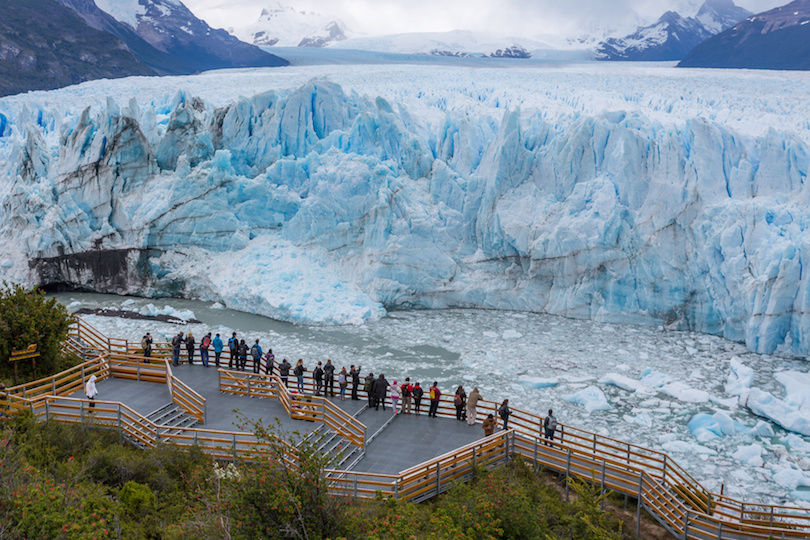
They don’t do things in a small way in Los Glaciares National Park. Not only is the park the largest national park in Argentina, it is home to the largest ice cap outside of Greenland and Antarctica – an ice cap that feeds 47 large glaciers. The most famous of these is the Perito Moreno glacier; unique among glaciers because it is advancing while others are receding.
The park also is home to Lake Argentino, the largest in the country. The park also is known for its ecology and biodiversity with the well-conserved Magellan Subpolar forest and Patagonian Steppe.
18. Pantanal (Brazil) [SEE MAP]

miquitos / Flickr
The Pantanal can be difficult to get to – access is mostly by plane or boat – but once you get there…Oh! The Pantanal, located mostly in Brazil (some is in Bolivia and Paraguay), is the world’s largest tropical wetland, encompassing an area the size of Washington State.
While not as famous as its sister wetlands in the Amazon, the Pantanal is the best place in South America to see wildlife, ranging from jaguars to capybaras.
17. Ushuaia (Argentina) [SEE MAP]
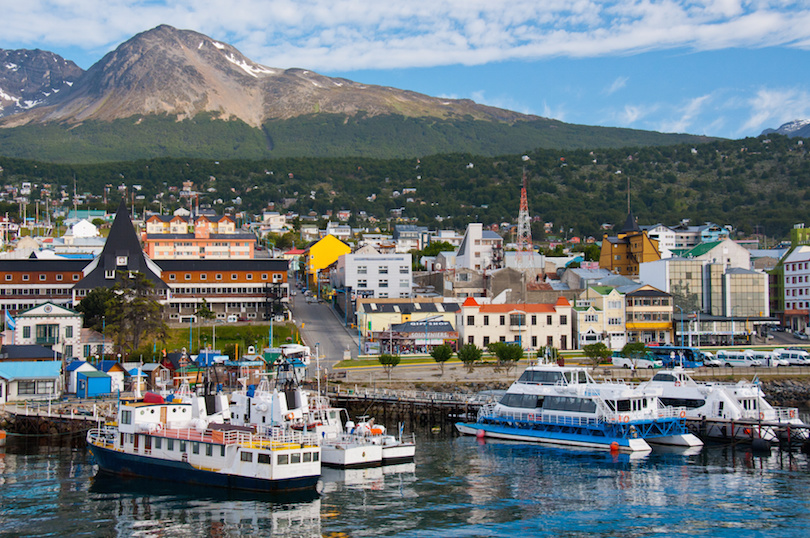
If you like to visit remote places, then put Ushuaia on your bucket list. The capital of Argentina’s Tierra del Fuego, Ushuaia is considered the southernmost city in the world. Indeed, the train to the End of the World ends here.
Nestled among the mountains along a bay, Ushuaia is very picturesque when it’s not cloudy or windy, which is much of the time. The former penal colony has a museum and it’s a good place to see penguins, orca whales and seals.
16. Tayrona National Park (Colombia) [SEE MAP]
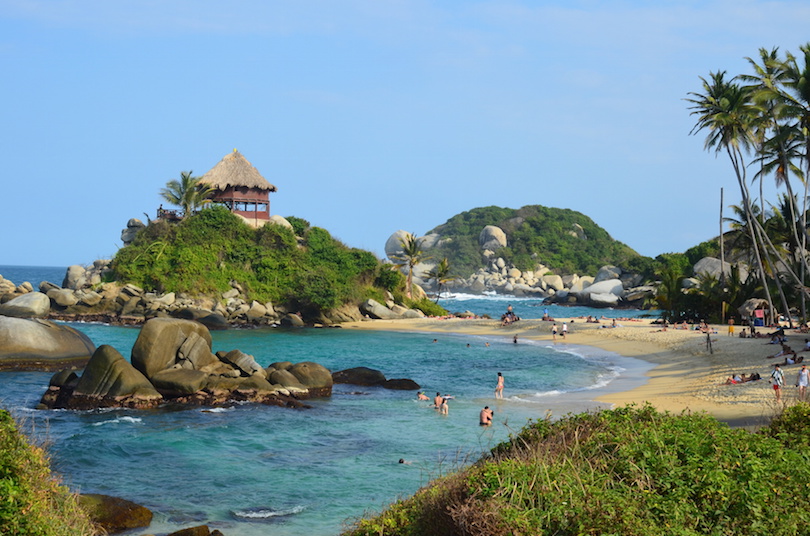
When protecting the environment and its inhabitants while enjoying stunning views is on your top list, you’re sure to enjoy Tayrona National Park on the Caribbean coast of Colombia.
The country’s second most visited national park, Tayrona is a protected marine reserve that takes in both land and sea. You’ll find great biodiversity in the flora and fauna here. Wildlife includes 300 species of birds, more than 100 different mammals and 70 kinds of bats.
Tayrona is probably best known for its spectacular beaches, which are set in deep bays, backed by mountains and shaded by coconut palms. Because of strong current however most beaches are not suitable for swimming.
15. Quito (Ecuador) [SEE MAP]
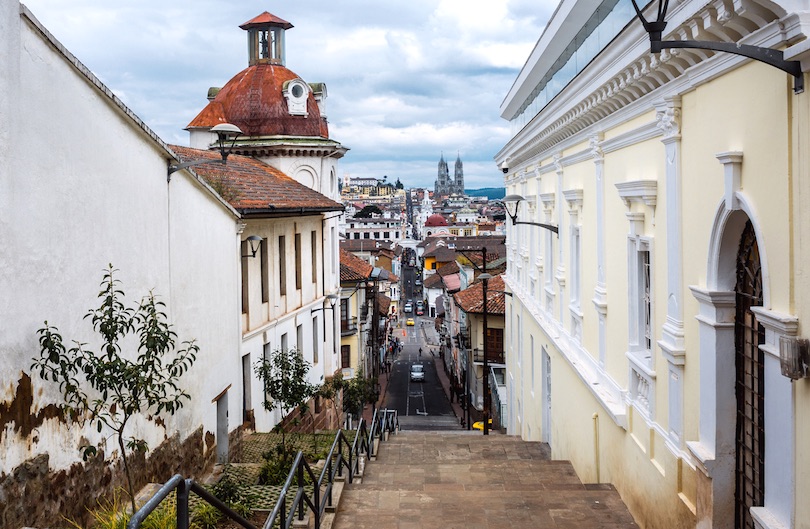
Ecuador’s capital, Quito, is unique among world capitals. It is the highest capital in the world (La Paz is higher but isn’t Bolivia’s legal capital) and also closest to the equator. Founded by the Spanish in 1534, Quito’s colorful old town is one of the best-preserved, least changed and largest in all the Americas.
Located in Ecuador’s northern highlands, the city is surrounded by volcanoes that can be seen on a clear day. Quito is the only world capital that is threatened by active volcanoes.
14. Colca Canyon (Peru) [SEE MAP]
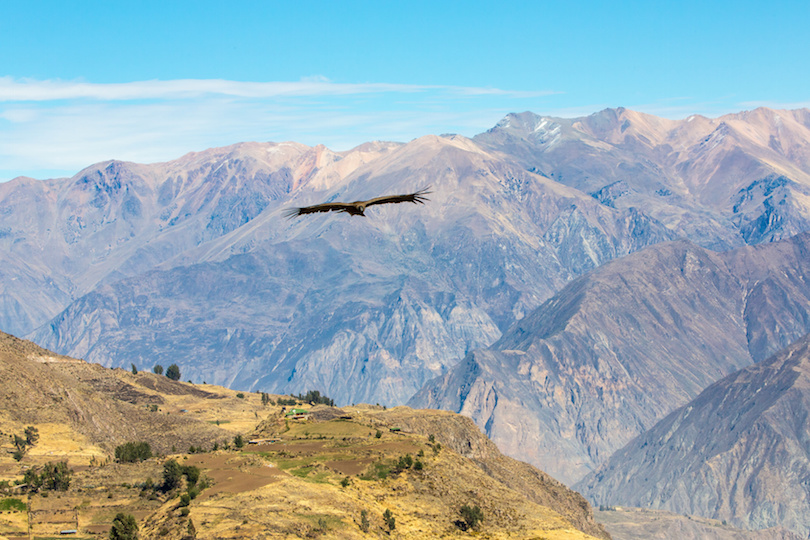
There’s a reason Colca Canyon is the third most visited tourist destination in Peru: stunning views. The canyon is one of the deepest in the world, but not the deepest in Peru, though it is more than twice as deep as the U.S. Grand Canyon.
If you get tired of scenic views, you can feast your eyes on the sky where you may see Andean condors and the biggest hummingbirds you’ve ever seen. Villages are a good place to buy local handcrafts.
13. Atacama Desert (Chile) [SEE MAP]
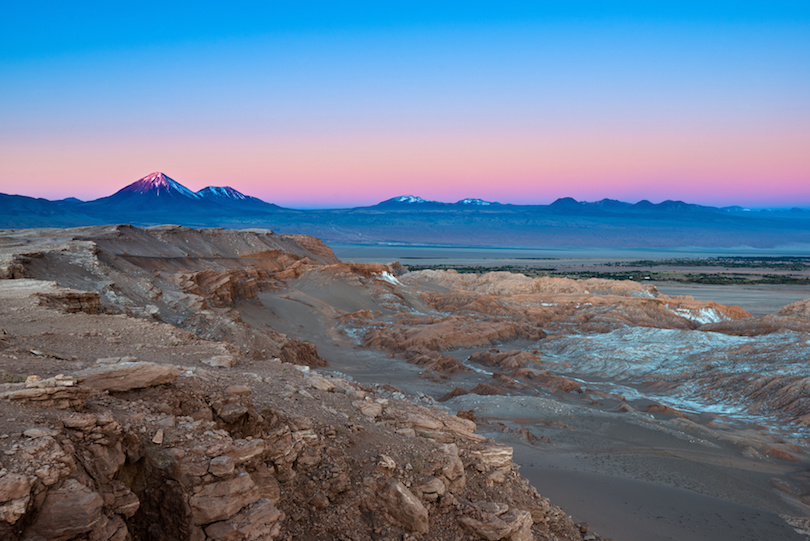
The Atacama Desert is unique: It’s the driest non-polar desert in the world, maybe only raining once every four years. It stretches about 1,600 km (1,000 miles) along the coast of Chile, situated between the Andes and the Pacific Ocean.
The soil is comparable to that found on Mars; portions stood in for Mars in the movie, Space Odyssey: Voyage to the Planets. Vast salt flats, active geysers and intense blue lagoons are just a few of the extraordinary features of this region.
12. Angel Falls (Venezuela) [SEE MAP]
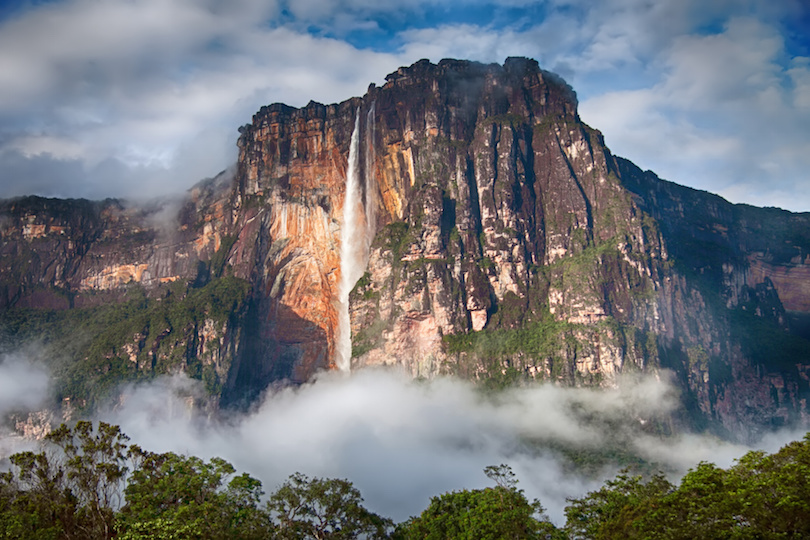
Angel Falls is most definitely a scene stealer in Venezuela’s Guayana Highlands. It is the highest uninterrupted waterfall in the world – 15 times higher than Niagara Falls, which is shared by Canada and the United States. Water cascades more than 950 meters (3,200 feet) down Auyantepu Mountain into the Rio Kerepacupai Meru.
The waterfall is named for American Jimmy Angel who, in 1937, became the first pilot to fly over the falls. Getting there is an adventure involving plane and river boat rides.
11. Cusco (Peru) [SEE MAP]
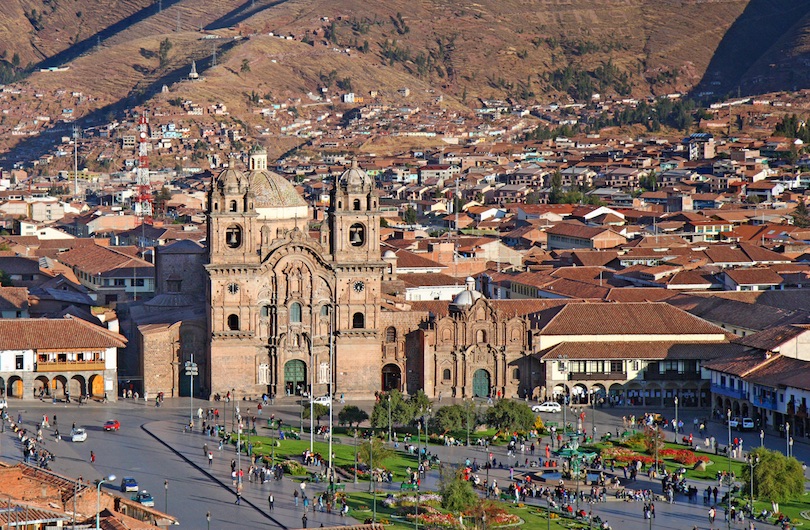
Cusco has a colorful historic past Located at 3,400 meters (11,000 feet) in elevation in the Andes Mountains, Cusco was once the capital of the mighty Inca Empire. Then, in the 16th century, it was conquered by the Spanish, who pretty much decimated the Incas.
Though not the national capital, Peru’s constitution names it the historical capital of the country. Remains of many Inca sites can be found in the surrounding area while the Spanish colonial heritage can be found in the Old Town.
10. Salar de Uyuni (Bolivia) [SEE MAP]
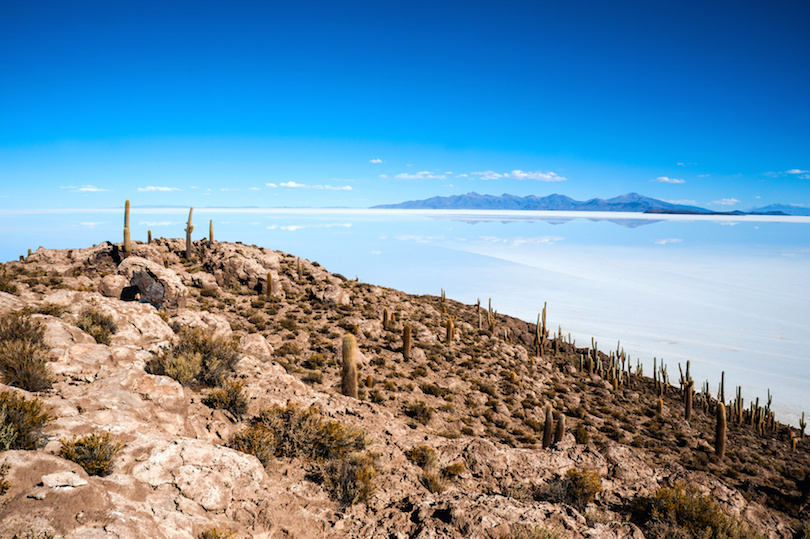
Situated in the Andes nearly 3,700 meters (12,000 feet) above sea level, Salar de Uyuni is the world’s largest salt flat. Located in southwest Peru, the salt flat is covered by a thick crust, which provides salt and covers a brine.
The salt flat is as flat as you can get and with the harsh terrain looks otherwordly, especially after rain when the Salar turns into a giant mirror. One of the most unusual places to visit in South America, it’s also a major breeding ground for flamingos.
9. Lake Titicaca (Peru & Bolivia) [SEE MAP]
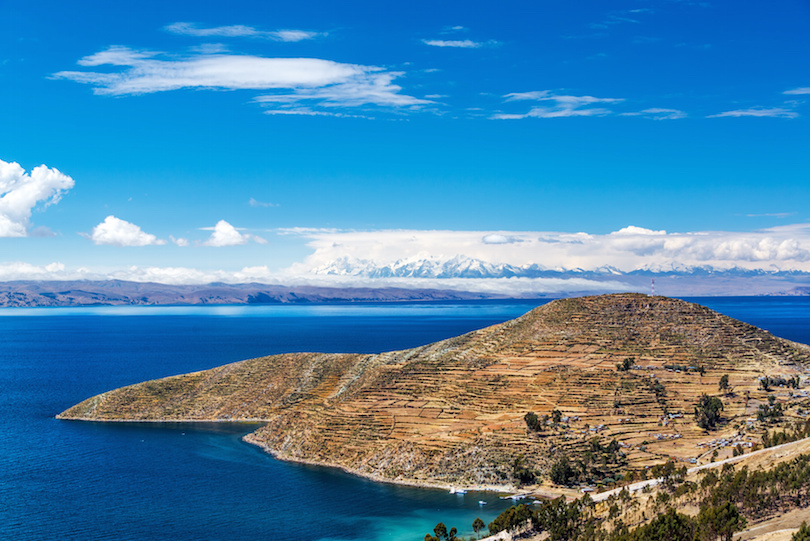
Lake Titicaca, South America’s largest lake, straddles the border of Bolivia and Peru. At an elevation of just over 3,800 meters (12,500 feet), it is considered the highest navigable lake in the world, though there are smaller lakes higher than this one.
Many of its 41 islands are inhabited, including the floating islands the natives make with heavy reeds. About 500 species of aquatic life live in the lake, which has a large population of water birds. Local belief says the sun was born at Lake Titicaca.
8. Easter Island (Chile) [SEE MAP]
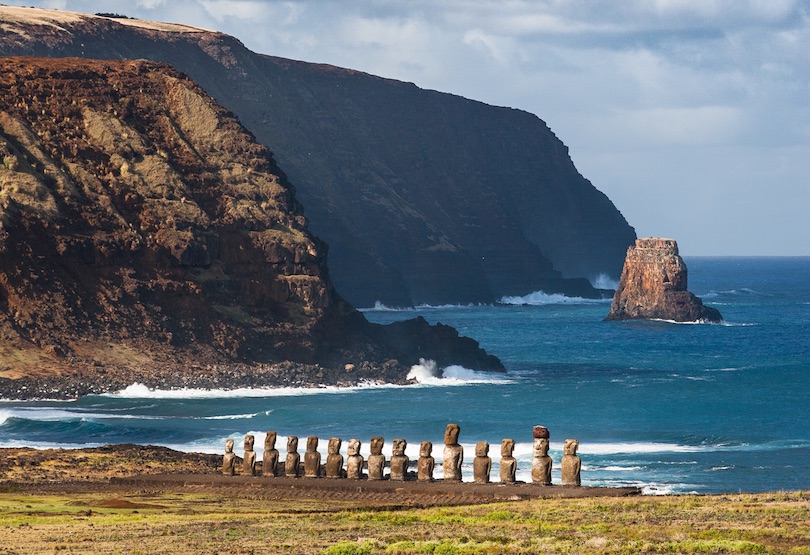
Getting to Easter Island can be time-consuming, since it is the most remote inhabited island in the world. The nearest inhabitants are almost 1,300 miles away. But it’s not its remoteness this Chilean territory is noted for. It’s what you’ll see when you get there: almost 900 primitive statues carved by early Polynesian inhabitants.
These awesome statues, called moai, may have been carved about 1,000 years ago. Most statues were carved from solidified volcanic ash, with obsidian being used for the black eyes.
7. Amazon Rainforest [SEE MAP]
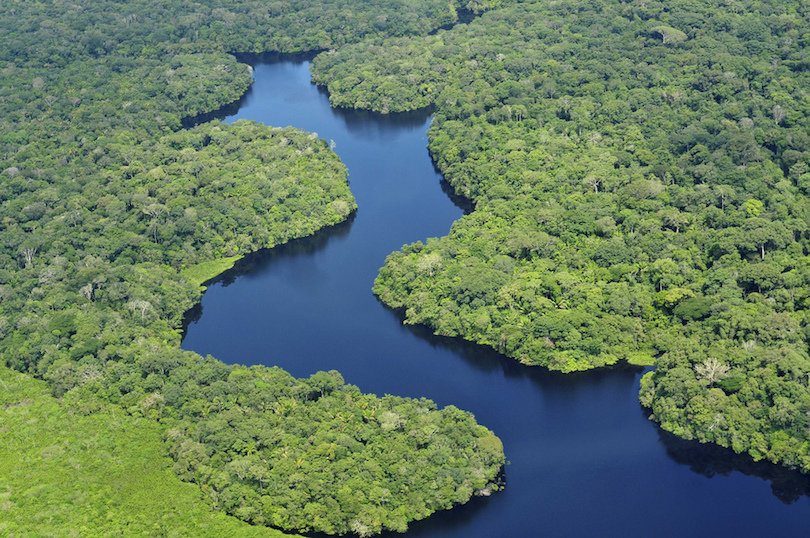
CIAT / Flickr
If you lived long enough to count that high, you could count 390 billion trees in the Amazon rainforest. This statistic is mind-boggling, to be sure, but then the Amazon rainforest is one awesome piece of real estate, covering about ¾ of the Amazon River basin.
It is the world’s largest tropical rainforest. Sixty percent of the rainforest is located in Brazil with sizeable chunks in Peru and Columbia; bordering countries have small shares. For sure, the rainforest is loaded with unique flora and fauna.
6. Torres del Paine National Park (Chile) [SEE MAP]
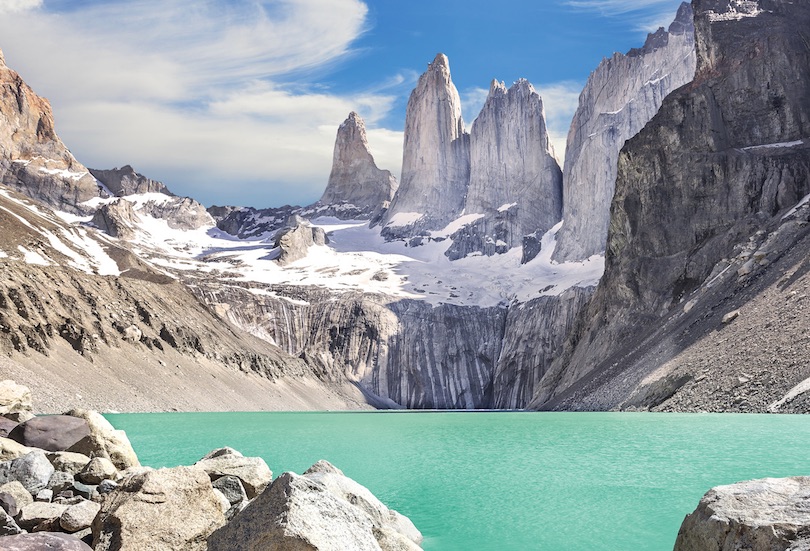
It may be located in remote Chilean Patagonia, but Torres del Paine National Park is one of Chile’s largest and most visited parks. Why? Well, the scenery is pretty spectacular.
The Torres del Paine (Paine means blue in the local indigenous language) is just one awesome sight you’ll see. The three peaks dominate the landscape in the Paine Mountains. Besides mountains, the park is dotted with glaciers, rivers, forests and steppe, making it a hit with outdoors enthusiasts. The park also is home to an endangered species of deer.
5. Buenos Aires (Argentina) [SEE MAP]
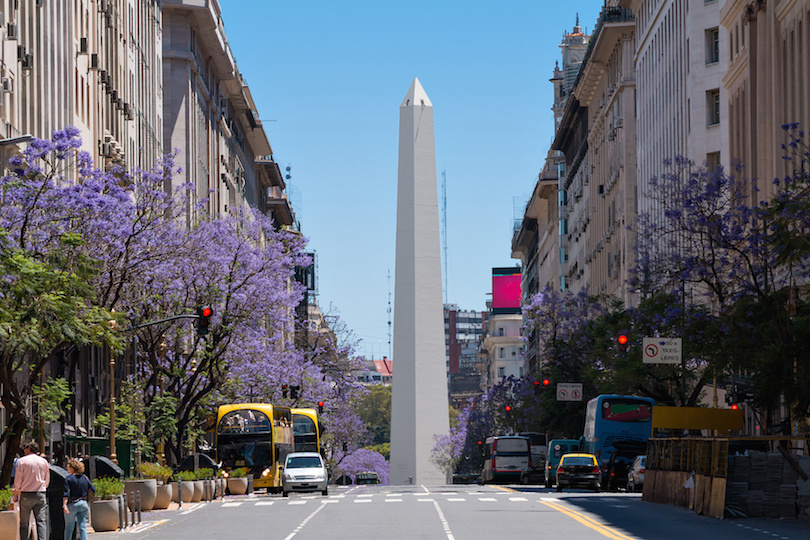
With 17 million people, Buenos Aires has the fourth largest population in the Americas. Located on the Rio de la Plata on the Argentinian coast, the city is noted for its cosmopolitan flair.
Because of its architecture and rich cultural life, Buenos Aires is the most visited city in South America. A must-see here is the Recoleta, a residential neighborhood known for its history. The Recoleta Cemetery is the district’s most famous attraction; it’s where Eva Peron is buried.
4. Galapagos Islands (Ecuador) [SEE MAP]
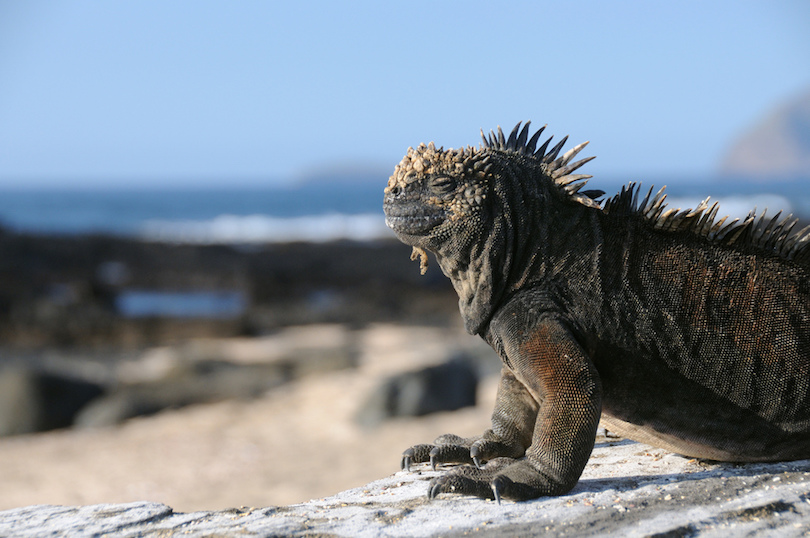
Scott Ableman / Flickr
If you want to get a glimpse of what prehistoric animals may have looked like, head to the Galapagos Islands. The animals are like no other place on earth, and include giant tortoises and scary-looking iguanas.
They were the impetus for Charles Darwin’s controversial 19th century book, On the Origin of Species. This archipelago of 18 major islands, about 900 km (550 miles) off the coast of Ecuador, was formed – and are still being formed – by volcanic action.
3. Iguazu Falls (Brazil & Argentina) [SEE MAP]
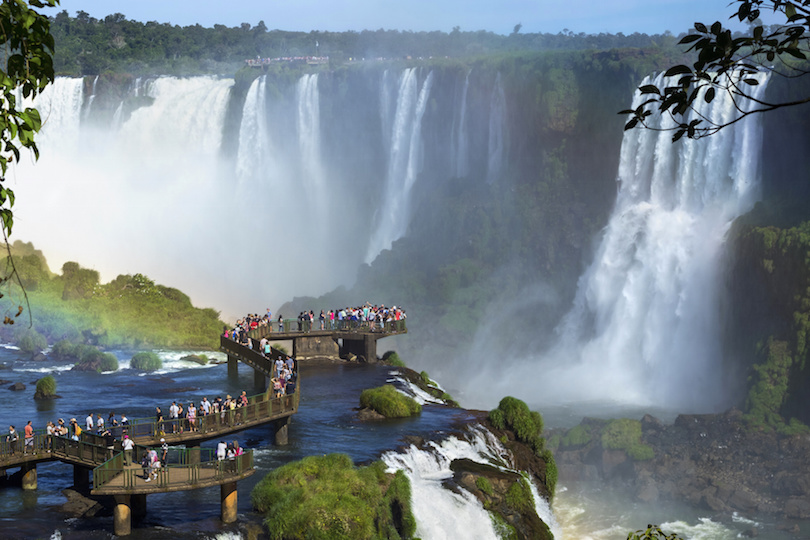
One of the best places to visit in South America, Iguazu Falls have to be seen to be appreciated as mere words cannot do them justice. They truly live up to their name, which translates as “big water:” They’re the world’s largest waterfalls system, with 275 waterfalls of various sizes – Devil’s Throat is the biggest.
For much of its journey to the ocean, the Iguazu River flows through Brazil, but, seemingly in a spirit of international cooperation, most of the falls are in Argentina.
2. Rio de Janeiro (Brazil) [SEE MAP]
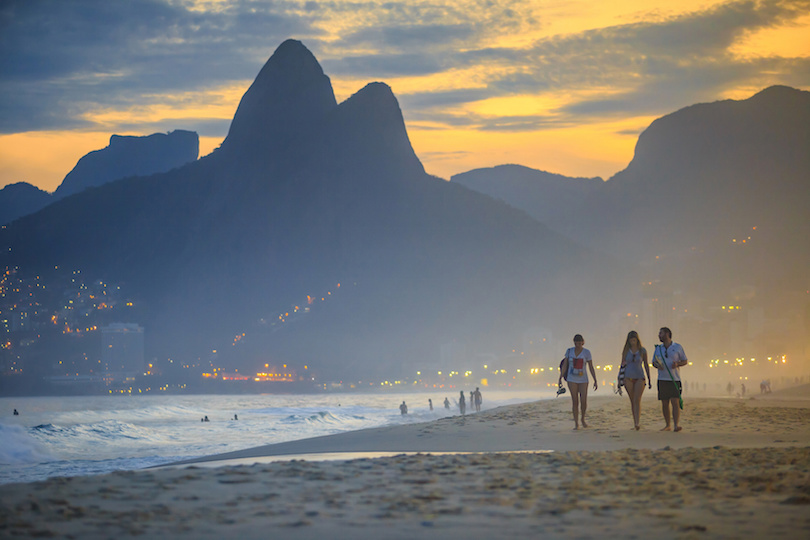
When you visit Rio de Janeiro you simply must take a samba lesson; even The Girl from Ipanema does the samba, Rio’s most popular dance. Besides the samba, this cosmopolitan city is known for its Carnival, the bossa nova, and Copacabana Beach.
Its most famous landmark may be the Christ the Redeemer statue that sits atop Corcovado Mountain. Rio hosted the 2016 Summer Olympics, though its residents overwhelmingly prefer soccer: Maracana Stadium is one of the largest soccer stadiums in the world.
1. Machu Picchu (Peru) [SEE MAP]

Machu Picchu is a magnificent representation of the Inca civilization before the Spanish came. Nestled in the Peruvian Andes, Machu Picchu served as a palace for the emperor, a fortress and as a site for religious ceremonies where human sacrifices were made to appease the gods.
Untouched by the Spanish, the site was abandoned after the conquest, only to be “discovered” by an American professor in the early 1900s. Built from polished stones, Machu Picchu is a fascinating example of classical Inca architecture. With its spectacular views, Machu Picchu is Peru’s most visited tourist attraction.
Source https://www.travelledmatt.com/10-reasons-not-travel-south-america/
Source https://www.touropia.com/best-places-to-visit-in-south-america/
Source